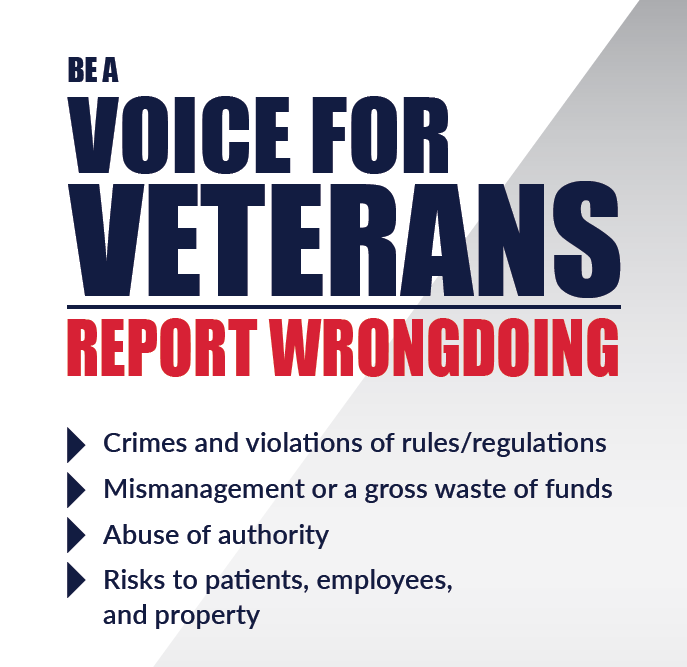- Home
- Federal Policies for Veterans
- How much time for C&P exams?
How Much Time to Allocate for C&P Exams: Questions for Administrators
How much time should VA management allocate for psychological C&P exams?
PTSDexams.net is an educational site with no advertising and no affiliate links. Dr. Worthen conducts Independent Psychological Exams (IPE) with veterans, but that information is on his professional practice website.

VA administrators must make difficult decisions regarding resource allocation. They must balance a need for high quality services with demands for productivity and timeliness.
I encourage VA managers who must make this time allocation decision to ask yourself the following questions to help inform your decision-making process.
The goal is to strike an appropriate balance between productivity and quality.
How Much Time to Allocate for C&P Exams?
Questions for Managers
VA Guidance
Q: Should mental health C&P examiners follow the recommendations of the C&P Clinician's Guide?
For example, consider the following from the Clinician's Guide regarding how much time to allocate for Initial PTSD exams:
14.6 What is the recommended time allotment for completing examination?
This guideline is designed to enhance the objectivity, reliability, and accuracy of PTSD examinations conducted in compensation and pension settings. Although the administration of the recommended assessment instruments requires additional clinician time, it is expected to result in improved quality and increased veteran satisfaction.
Approximately three to four hours are required to conduct a comprehensive initial compensation and pension examination for PTSD. This includes 90 minutes for interview assessment of trauma stress exposure and PTSD symptoms plus an additional hour to complete other portions of the examination. An additional 1.5 hours is required for review of psychological testing materials and preparation of a report of findings.1
Note: VA published a Best Practice Manual for Posttraumatic Stress Disorder (PTSD) Compensation and Pension Examinations which also discusses how much time to allocate for psychological C&P exams,2 although the VA disavowed the Best Practice Manual in 2014.3,4
Evidence-Based Assessment (EBA)
Q: VA has demonstrated worldwide leadership in educating and training mental health clinicians to provide Evidence-Based Psychotherapy (EBP) for PTSD and other mental disorders.5 Should principles of Evidence-Based Assessment (EBA)6,7,8,9 guide the development of a C&P exam protocol for PTSD and other mental disorders? Or should examiners use non-evidence-based assessment procedures?
Structured Diagnostic Interviews
Q: For PTSD exams, should examiners use a PTSD-specific structured diagnostic interview such as the Clinician-Administered PTSD Scale for DSM-5 (CAPS-5), particularly given that the VA’s National Center for PTSD considers it to be the “gold standard” in PTSD assessment, and VA-sponsored research on the use of the CAPS during C&P exams showed that its use leads to more accurate results?10
Q: Or, despite the research evidence, should the examiner simply ask the Veteran questions about PTSD symptoms in an unstructured, free-form manner to save time, even though the results will not be as accurate?
Q: Given that, in general, structured diagnostic interviews are more reliable (consistent across examiners) and valid (diagnostically accurate) than unstructured interviews,11 should C&P examiners use them to assess for possible mental disorders other than PTSD during all mental health C&P exams?
Specialized Assessment of Combat Exposure and Stress
Q: Should examiners use specialized assessment of combat exposure (e.g., Combat Exposure Scale) during Initial PTSD exams?
Q: If so, should the results be reported in the Remarks section of the DBQ? How much time should be allowed to write up the results?
Q: Should examiners use specialized assessment of combat stress severity (e.g., Mississippi Scale for Combat-Related Posttraumatic Stress Disorder) during Initial PTSD exams?
Q: If so, should the results be reported in the Remarks section of the DBQ? How much time should be allowed to write up the results?
"Psychometric assessment of PTSD provides quantitative assessment of degree of PTSD symptom severity. Judgments about symptom severity can be made by comparing an individual’s scores against norms established on reference samples of individuals who are known to have or not have PTSD. Cutting scores have been established for the psychometric measures of PTSD recommended here, based on their high sensitivity and specificity in discriminating individuals with PTSD from those without PTSD." – C&P Clinicians’ Guide
Collateral Interviews
Q: If a Veteran asks the examiner to please interview his or her spouse or other family member, should the examiner refuse to do so?
Q: Or should the examiner conduct such a collateral interview? How much time should the examiner give the spouse or family member to discuss their loved one’s symptoms and related problems?
Q: If collateral interviews are permitted, should the results be reported in the Remarks section of the DBQ? How much time should be allowed to write up that information?
Assessment of Social & Occupational Functioning
Q: Should examiners use empirically-validated measures of social and occupational functioning?12 If so, should the results be reported in the Remarks section of the DBQ? How much time should be allowed to write up that information?
Assessing for Under- or Over-reporting
Q: Even though evidence exists showing that some Veterans applying for compensation benefits over-report PTSD symptoms,13 should examiners omit measures of response bias from their evaluation protocol? How about assessing for under-reporting (minimizing), which also happens with some frequency?
Q: If measures of response bias are permitted, should the results be reported in the Remarks section of the DBQ? How much time should be allowed to write up that information?
Record Review
Q: How much time should be allowed for review of the claims file?
Q: If the claims file contains extensive medical records should they be reviewed in their entirety? How much time should be allowed?
Q: If the claims file contains military personnel records, should the examiner review them?
Q: Should the examiner take the time to learn how to read military personnel records and understand them?14
Literature Review
Should the examiner review scholarly literature in psychology, psychiatry, and related disciplines pertinent to the case at hand?
Critical Thinking & Effective Communication
Q: Should the examiner spend some time exercising his or her critical thinking skills toward integrating all the relevant information in the case?
Q: Toward analyzing the data in order to formulate a cogent response to referral questions? If so, how much time should be allowed for data integration and critical analysis?
Q: How much time should the examiner spend writing the medical opinion and rationale? (Given that federal courts expect examiners to provide clear, cogent reasoning for their opinions.)15
Federal Rules of Evidence
Q: Should the examiner pay any heed to the Court of Appeals for Veterans Claims reference to Federal Rules of Evidence 702 with regard to the probative value of an examiner’s opinion and rationale?16
Peer Review
Q: Should the examiner consider asking a colleague to peer review some of his or her exam reports?
Specialty Guidelines for Forensic Psychologists
Q: Should psychologist examiners be familiar with the Specialty Guidelines for Forensic Psychologists and generally seek to follow those Guidelines as long as they do not conflict with VA policy? For example:
2.05 Knowledge of the Scientific Foundation for Opinions and Testimony
Forensic practitioners seek to provide opinions and testimony that are sufficiently based upon adequate scientific foundation, and reliable and valid principles and methods that have been applied appropriately to the facts of the case.
9.02 Use of Multiple Sources of Information
Forensic practitioners ordinarily avoid relying solely on one source of data, and corroborate important data whenever feasible (American Educational Research Association, American Psychological Association, & National Council on Measurement in Education, in press). When relying upon data that have not been corroborated, forensic practitioners seek to make known the uncorroborated status of the data, any associated strengths and limitations, and the reasons for relying upon the data.
10.01 Focus on Legally Relevant Factors
Forensic examiners seek to assist the trier of fact to understand evidence or determine a fact in issue, and they provide information that is most relevant to the psycholegal issue. In reports and testimony forensic practitioners typically provide information about examinees’ functional abilities, capacities, knowledge, and beliefs, and address their opinions and recommendations to the identified psycholegal issues.
10.06 Documentation and Compilation of Data Considered
Forensic practitioners are encouraged to recognize the importance of documenting all data they consider with enough detail and quality to allow for reasonable judicial scrutiny and adequate discovery by all parties.
11.03 Disclosing Sources of Information and Bases of Opinions
Forensic practitioners are encouraged to disclose all sources of information obtained in the course of their professional services, and to identify the source of each piece of information that was considered and relied upon in formulating a particular conclusion, opinion or other professional product. Consistent with relevant law and rules of evidence, when providing professional reports and other sworn statements or testimony, forensic practitioners strive to offer a complete statement of all relevant opinions that they formed within the scope of their work on the case, the basis and reasoning underlying the opinions, the salient data or other information that was considered in forming the opinions, and an indication of any additional evidence that may be used in support of the opinions to be offered.
American Academy of Psychiatry and the Law: Guidelines for Forensic Evaluation of Psychiatric Disability
Q: Should psychiatrist and psychologist examiners be familiar with the American Academy of Psychiatry and the Law Guidelines for Forensic Evaluation of Psychiatric Disability and generally seek to follow those Guidelines as long as they do not conflict with VA policy?17 For example:
"... psychological and neuropsychological tests can be valuable sources of information when conducted in conjunction with the psychiatric interview, examination of records, and review of information from collateral sources."
"[The psychiatrist should review] evaluations performed by other mental health experts as well as those from other nonpsychiatric physicians can help determine the consistency of an individual’s reports and allow comparison of diagnostic formulations. Evaluations that include psychological and neuropsychological testing can be helpful in establishing the validity of self-reports, clinical symptom patterns, and personality features of the individual."
"Collateral information is an essential component of a comprehensive disability evaluation. Objective evidence of a psychiatric disorder and actual impairment is necessary to reach a conclusion that a psychiatric impairment is present."
Institute of Medicine Recommendations
Q: Should administrators take seriously the recommendations of the Institute of Medicine in their VA-commissioned study of C&P exams for PTSD?18 For example:
Many of the problems and issues identified by the committee in previous chapters can be addressed by consistently allocating and applying the time and resources needed for a thorough PTSD C&P clinical examination. This measure will facilitate:
- more comprehensive and consistent assessment of veteran reports of exposure to trauma;
- more complete assessment of the presence and impact of comorbid conditions;
- the conduct of standardized psychological testing where appropriate;
- more accurate assessment of the social and vocational impacts of identified disabilities;
- evaluation of any suspected malingering or dissembling using multiple strategies including standardized tests, if appropriate, and clinical face-to-face assessment;
- more detailed documentation of the claimant’s condition to inform the rater’s decision (and thus potentially lead to better and more consistent decisions); and
- an informed, case-specific determination of whether reexamination is appropriate and, if so, when.
Footnotes
1. Veterans Health Administration, C&P Service Clinician’s Guide (Washington, D.C.: Department of Veterans Affairs, 2002), 202.
2. Patricia Watson et al., Best Practice Manual for Posttraumatic Stress Disorder (PTSD) Compensation and Pension Examinations, (Washington, D.C.: Department of Veterans Affairs, 2004), 2.
3. Huang, Daniel, "VA Shift Opens Door to Disability Fraud", Wall Street Journal, July 15, 2016, ("The VA ... said that its best-practice guidelines before 2010 are out of date because they were written before the adoption of a streamlined benefits documentation system. Ms. Heup, the VA spokeswoman, also said the PTSD best-practice instructions didn’t fall under 'formal VA training'.")
4. VA's explanation for disavowing the Best Practice Manual is disingenuous. The "adoption of a streamlined benefits documentation system" should not affect how psychologists conduct C&P exams, as the advent of DBQs simply introduced a form (the DBQ) upon which examiners report some or all of their exam findings. And to claim that the Best Practice Manual did not constitute "formal VA training" begs the question, Why devote significant resources to develop a best practice manual if examiners were welcome to ignore it?
5. Karlin, Bradley E., and Gerald Cross. "From the Laboratory to the Therapy Room: National Dissemination and Implementation of Evidence-based Psychotherapies in the US Department of Veterans Affairs Health Care System." American Psychologist 69, no. 1 (2014): 19–33.
6. Bornstein, Robert F. "Evidence-based Psychological Assessment." Journal of Personality Assessment 99, no. 4 (2017): 435-445.
7. Hunsley, John J., and Eric J. Mash. "Evidence-based Assessment." Annual Review of Clinical Psychology (2007): 329-51.
8. Youngstrom, Eric A., Sophia Choukas-Bradley, Casey D. Calhoun, and Amanda Jensen-Doss. "Clinical Guide to the Evidence-based Assessment Approach to Diagnosis and Treatment." Cognitive and Behavioral Practice 22, no. 1 (2015): 20-35.
9. Youngstrom, Eric A. "Future Directions in Psychological Assessment: Combining Evidence-based Medicine Innovations With Psychology's Historical Strengths to Enhance Utility." Journal of Clinical Child & Adolescent Psychology 42, no. 1 (2013): 139-159.
10. Speroff, Theodore, Patricia L. Sinnott, Brian Marx, Richard R. Owen, James C. Jackson, Robert Greevy, Nina Sayer et al. "Impact of Evidence‐based Standardized Assessment on the Disability Clinical Interview for Diagnosis of Service‐connected PTSD: a Cluster‐randomized Trial." Journal of Traumatic Stress 25, no. 6 (2012): 607-615.
11. Kashner, T. M., Rush, A. J., Surís, A., Biggs, M. M., Gajewski, V. L., Hooker, D. J., Shoaf, T., & Altshuler, K. Z. (2003). Impact of structured clinical interviews on physicians' practices in community mental health settings. Psychiatric Services, 54(5), 712-718.
Miller, P. R., Dasher, R., Collins, R., Griffiths, P., & Brown, F. (2001). Inpatient diagnostic assessments: 1. accuracy of structured vs. unstructured interviews. Psychiatry Research, 105(3), 255-264.
Miller, P. R. (2001). Inpatient diagnostic assessments: 2. Interrater reliability and outcomes of structured vs. unstructured interviews. Psychiatry Research, 105(3), 265–271. doi:10.1016/S0165-1781(01)00318-3
Rogers, R. (2001). Handbook of Diagnostic and Structured Interviewing. New York, NY: Guilford Press.
Rogers, R. (2003). Standardizing DSM-IV Diagnoses: The Clinical Applications of Structured Interviews. Journal of Personality Assessment, 81(3), 220-225.
Segal, D. L., & Coolidge, F. L. (2007). Structured and semistructured interviews for differential diagnosis: Issues and applications. In M. Hersen, S. M. Turner, D. C. Beidel, M. Hersen, S. M. Turner, D. C. Beidel (Eds.) , Adult psychopathology and diagnosis (5th ed.) (pp. 78-100). Hoboken, NJ US: John Wiley & Sons Inc.
Shear MK; Greeno C; Kang J; Ludewig D; Frank E; Swartz HA; Hanekamp, M. (2000). Diagnosis of nonpsychotic patients in community clinics. The American Journal Of Psychiatry, 157(4), 581-587.
Sheehan, D. V., LeCrubier, Y., Sheehan, K. H., Amorim, P., Janavs, J., Weiler, E., . . . Dunbar, G. C. (1998). The Mini-International Neuropsychiatric Interview (M.I.N.I.): The development and validation of a structured diagnostic psychiatric interview for DSM-IV and ICD-10. Journal of Clinical Psychiatry, 59(Suppl 20), 22–33.
Suppiger, A., In-Albon, T., Hendriksen, S., Hermann, E., Margraf, J., & Schneider, S. (2009). Acceptance of structured diagnostic interviews for mental disorders in clinical practice and research settings. Behavior Therapy, 40(3), 272-279.
12. Rodriguez, P., Holowka, D., & Marx, B. (2012). Assessment of posttraumatic stress disorder-related functional impairment: a review. Journal Of Rehabilitation Research And Development, 49(5), 649-665.
Marx, Brian P., Erika J. Wolf, Michelle M. Cornette, Paula P. Schnurr, Marc I. Rosen, Matthew J. Friedman, Terence M. Keane, and Theodore Speroff. “Using the WHODAS 2.0 to Assess Functioning Among Veterans Seeking Compensation for Posttraumatic Stress Disorder.” Psychiatric Services 66, no. 12 (December 2015): 1312–17.
McCaslin, Shannon E., Shira Maguen, Thomas Metzler, Jeane Bosch, Thomas C. Neylan, and Charles R. Marmar. “Assessing Posttraumatic Stress Related Impairment and Well-Being: The Posttraumatic Stress Related Functioning Inventory (PRFI).” Journal of Psychiatric Research 72 (January 2016): 104–11.
McCaslin, Shannon E., Shira Maguen, Thomas Metzler, Jeane Bosch, Thomas C. Neylan, and Charles R. Marmar. “Assessing Posttraumatic Stress Related Impairment and Well-Being: The Posttraumatic Stress Related Functioning Inventory (PRFI).” Journal of Psychiatric Research 72 (January 2016): 104–11.
13. Calhoun, P., Earnst, K., Tucker, D., Kirby, A., & Beckham, J. (2000). Feigning combat-related posttraumatic stress disorder on the personality assessment inventory. Journal Of Personality Assessment, 75(2), 338-350
Dalton, J. E., Tom, A., Rosenblum, M. L., Garte, S. H., & Aubuchon, I. N. (1989). Faking on the Mississippi Scale for Combat-Related Posttraumatic Stress Disorder. Psychological Assessment: A Journal of Consulting and Clinical Psychology, 1(1), 56-57.
Freeman, T., Powell, M., & Kimbrell, T. (2008). Measuring symptom exaggeration in Veterans with chronic posttraumatic stress disorder. Psychiatry Research, 158(3), 374-380.
Frueh, B., Elhai, J., Gold, P., Monnier, J., Magruder, K., Keane, T. & Arana, G. (2003). Disability compensation seeking among Veterans evaluated for posttraumatic stress disorder. Psychiatric Services, 54(1), 84–91.
Frueh, B. C., Gold, P. B., & de Arellano, M. A. (1997). Symptom overreporting in combat Veterans evaluated for PTSD: Differentiation on the basis of compensation seeking status. Journal of Personality Assessment, 68, 369–384
Geraerts, E., Kozaric-Kovacic, D., Merckelbach, H., Peraica, T., Jelicic, M., & Candel, I. (2009). Detecting deception of war-related posttraumatic stress disorder. Journal of Forensic Psychiatry & Psychology, 20(2), 278-285
Gerardi, R. J., Blanchard, E. B., & Kolb, L. C. (1989). Ability of Vietnam Veterans to dissimulate a psychophysiological assessment for post-traumatic stress disorder. Behavior Therapy, 20(2), 229-243
McCaffrey, R. J., & Bellamy-Campbell, R. (1989). Psychometric detection of fabricated symptoms of combat-related post-traumatic stress disorder: A systematic replication. Journal of Clinical Psychology, 45(1), 76-79
Orme, D. R. (2012). Diagnosing PTSD: Lessons from neuropsychology. Military Psychology, 24(4), 397-413.
Smith, D. W., & Frueh, B. C. (1996). Compensation seeking, comorbidity, and apparent symptom exaggeration of PTSD symptoms among Vietnam combat Veterans. Psychological Assessment, 8, 3–6
Sparr, L. & Pankratz, L. D. (1983). Factitious posttraumatic stress disorder. The American Journal of Psychiatry, 40(8), 1016–1019.
14. Moering, R. G. (2011). Military service records: Searching for the truth. Psychological Injury and Law, 4(3-4), 217-234. doi:10.1007/s12207-011-9114-3
15. “The examiner may also have an obligation to conduct research in the medical literature depending on the evidence in the record at the time of examination.” - Jones v. Shinseki, 23 Vet. App. 382, 391 (2010)
16. “That the medical expert is suitably qualified and sufficiently informed are threshold considerations; most of the probative value of a medical opinion comes from its reasoning. Neither a VA medical examination report nor a private medical opinion is entitled to any weight in a service connection or rating context if it contains only data and conclusions. ... It is the factually accurate, fully articulated, sound reasoning for the conclusion ... that contributes probative value to a medical opinion.” - Nieves-Rodriguez v. Peake, 22 Vet. App. 295, 304, 306 (2008).
17. Anfang, Stuart A., Liza H. Gold, and Donald J. Meyer. "AAPL Practice Resource for the Forensic Evaluation of Psychiatric Disability." Supplement, Journal of the American Academy of Psychiatry and the Law 46, no. 1 (2018): S1–S47. https://perma.cc/SF3V-EBHN.
18. Institute of Medicine and National Research Council (2007). PTSD compensation and military service. Washington, DC: National Academies Press.
Bibliography
Veterans Health Administration. C&P Service Clinician’s Guide. Washington, D.C.: Department of Veterans Affairs, 2002.
Watson, Patricia, Miles McFall, Caroll McBrine, Paula P. Schnurr, Matthew J. Friedman, Terence Keane, and Jessica L. Hamblen. Best Practice Manual for Posttraumatic Stress Disorder (PTSD) Compensation and Pension Examinations. Washington, D.C.: Department of Veterans Affairs, 2004.
You are here:
Subscribe to receive new articles and other updates
What Do You Think?
I value your feedback!
If you would like to comment, ask questions, or offer suggestions about this page, please feel free to do so. Of course, keep it clean and courteous.
You can leave an anonymous comment if you wish—just type a pseudonym in the "Name" field.
If you want to receive an email when someone replies to your comment, click the Google Sign-in icon on the lower right of the comment box to use Google Sign-in. (Your email remains private.)
↓ Please comment below! ↓





